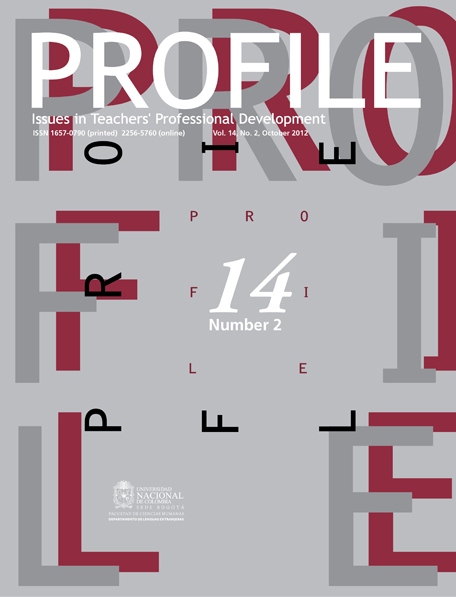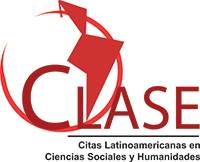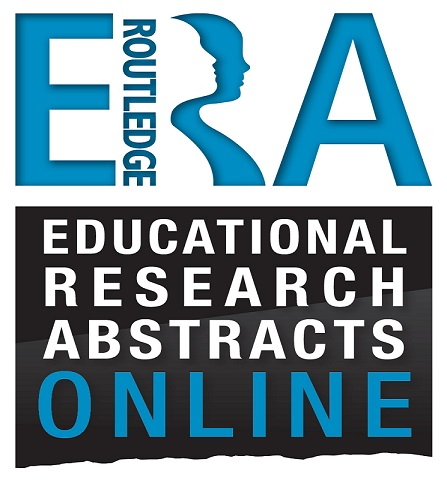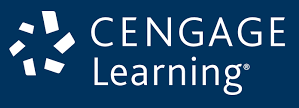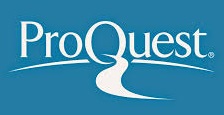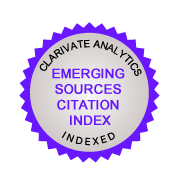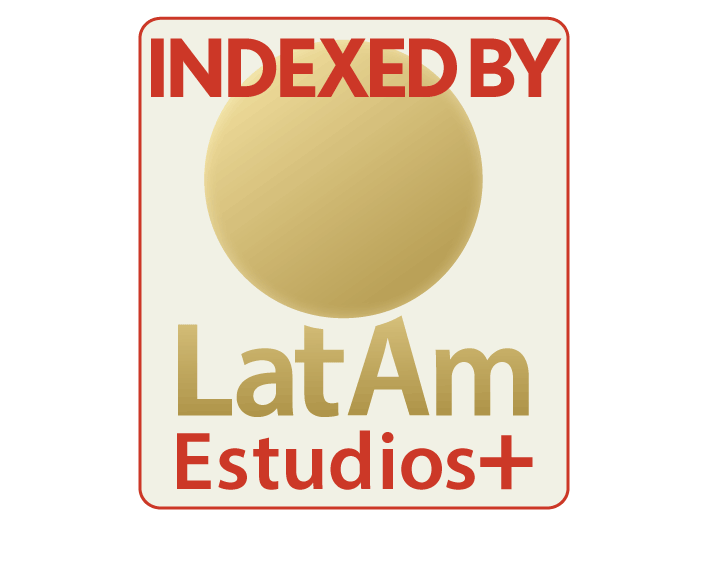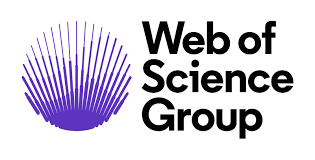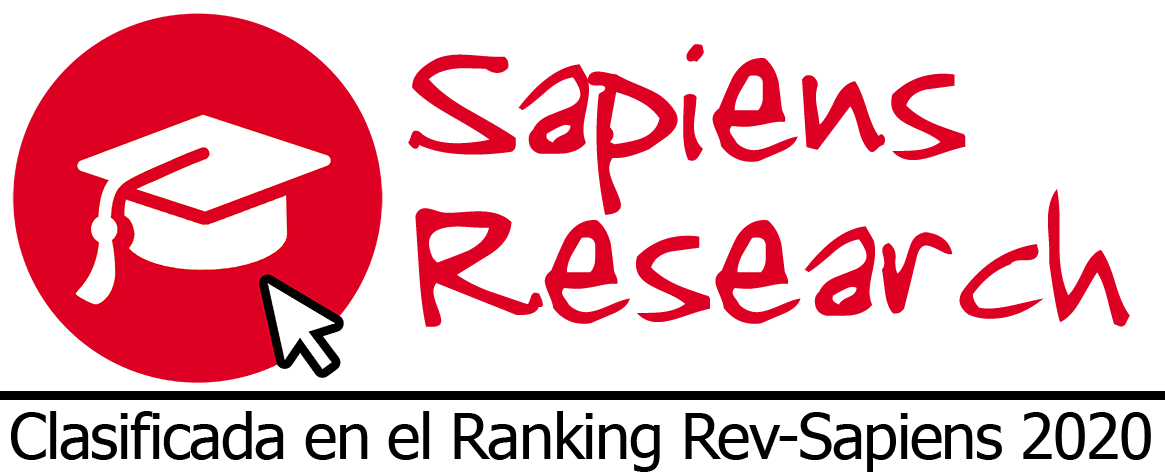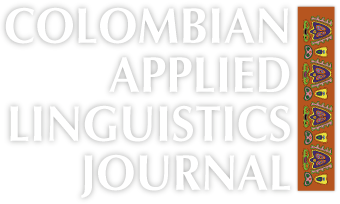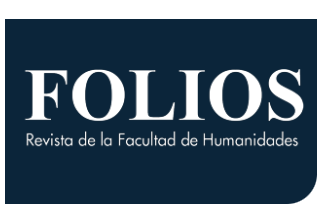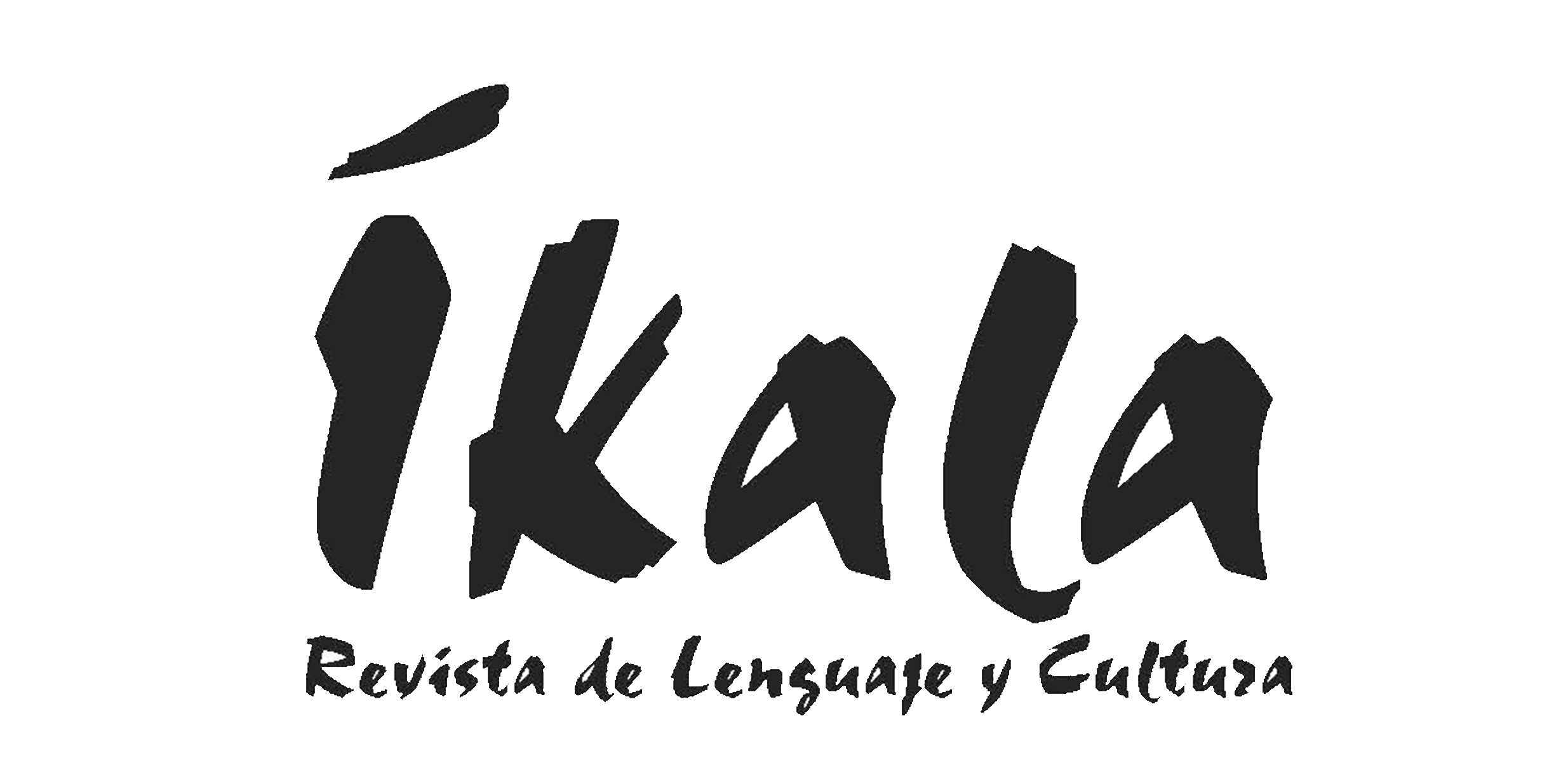Promoting Learner Autonomy Through Teacher-Student Partnership Assessment in an American High School: A Cycle of Action Research
El papel de la evaluación negociada en el desarrollo de la autonomía del estudiante en la escuela secundaria norteamericana: un ciclo de investigación-acción
Keywords:
Action research, assessment for learning, learner autonomy, rubrics, summative assessment (en)Autonomía del estudiante, evaluación formativa, evaluación sumativa, investigación-acción, rúbricas (es)
In this article I present some findings of an action research study intended to find out to what extent a teacher-student partnership in writing assessment could promote high school students’ autonomy. The study was conducted in a U.S. school. Two main action strategies in the assessment process were the use of symbols as the form of feedback and the design of a rubric containing criteria negotiated with the students as the scoring method. Results showed that the students developed some autonomy reflected in three dimensions: ownership of their learning process, metacognition, and critical thinking, which positively influenced an enhancement of their writing skills in both English and Spanish. Likewise, the role of the teacher was found to be paramount to set appropriate conditions for the students’ development of autonomy.
Esta investigación-acción analizó la medida en que una forma alternativa de evaluación negociada promovería la autonomía de los estudiantes. El estudio se realizó en una escuela secundaria norteamericana. Las principales estrategias de acción fueron el uso de símbolos en la retroalimentación y la inclusión de criterios negociados con los estudiantes en el diseño de una rúbrica que se utilizó como instrumento de evaluación y calificación. Los resultados mostraron que los estudiantes desarrollaron su autonomía en tres dimensiones: apropiación de su proceso de aprendizaje, metacognición y pensamiento crítico. Esto influenció positivamente el desarrollo de sus habilidades de escritura tanto en inglés como en español. Asimismo se encontró que el papel del profesor es vital para establecer condiciones propicias en el desarrollo de la autonomía de los estudiantes.
Promoting Learner Autonomy Through
Teacher-Student Partnership Assessment in an American High School: A Cycle of
Action Research
El papel
de la evaluación negociada en el desarrollo de la autonomía del
estudiante en la escuela secundaria norteamericana: un ciclo de
investigación-acción
Édgar
Picón Jácome*
Universidad de
Antioquia, Colombia
*edgar.picon@idiomas.udea.edu.co
This article was received on October 15, 2011, and
accepted on May 30, 2012.
In this article I present some findings of an action
research study intended to find out to what extent a teacher-student
partnership in writing assessment could promote high school students’
autonomy. The study was conducted in a U.S. school. Two main action strategies
in the assessment process were the use of symbols as the form of feedback and the
design of a rubric containing criteria negotiated with the students as the
scoring method. Results showed that the students developed some autonomy
reflected in three dimensions: ownership of their learning process,
metacognition, and critical thinking, which positively influenced an
enhancement of their writing skills in both English and Spanish. Likewise, the
role of the teacher was found to be paramount to set appropriate conditions for
the students’ development of autonomy.
Key words: Action research, assessment for learning, learner autonomy, rubrics,
summative assessment.
En este
artículo presento hallazgos de una investigación-acción
cuyo objetivo era averiguar en qué medida una forma alternativa de
evaluación negociada promovería la autonomía de los
estudiantes. El estudio se realizó en una escuela secundaria
norteamericana. Las principales estrategias de acción fueron el uso de
símbolos en la retroalimentación y la inclusión de
criterios negociados con los estudiantes en el diseño de una
rúbrica que se utilizó como instrumento de evaluación y
calificación. Los resultados mostraron que los estudiantes desarrollaron
su autonomía en tres dimensiones: apropiación de su proceso de
aprendizaje, metacognición y pensamiento
crítico, lo que influenció positivamente el desarrollo de sus
habilidades de escritura tanto en inglés como en español.
Asimismo se encontró que el papel del profesor es de vital importancia
para establecer condiciones propicias en el desarrollo de la autonomía
de los estudiantes.
Palabras clave: autonomía
del estudiante, evaluación formativa, evaluación sumativa, investigación-acción,
rúbricas.
Introduction
In his work, Assessment
of autonomy or assessment for autonomy?, Lamb (2010) elaborates on the
notion of assessment that is designed to foster learner autonomy. Supporting
his arguments with the work of Black and Williams (1998, 2005, cited in Lamb,
2010) and Black and Jones (2006, cited in Lamb, 2010), Lamb comes to the
conclusion that “assessment for learning is designed to develop the
necessary capacities for becoming an autonomous learner with a view to
improving learning through better self-monitoring and self-evaluation leading
to better planning” (p. 100). The author defines assessment for autonomy
as “any assessment for which the first priority in its design and
practice is to serve the purpose of promoting pupils’ autonomy” (p.
101).
This article presents my effort within that same
spirit: designing assessment procedures with the objective of enhancing
students’ autonomy. I highlight three aspects of the study that I
consider especially significant: (1) the foreign language setting in which it
took place that might provide valuable insight for schoolteachers to try out
similar actions; (2) the usefulness of rubrics to help teachers make grading
practices formative and provide space for them to share their power with the
students; and (3) the fact of the study being inserted in a cycle of action
research, which places research practices within the reach of teachers.
The Assessment
System
The assessment system in this project corresponds to a
teacher-student partnership type1 in which
students participated in the creation of the scoring instrument and as active
co-evaluators.
Assessment had both a formative and a summative
purpose within a conscious intention on my part to promote students’
autonomy. In the following paragraphs, I expand the key concepts that support
this assessment procedure.
Key Terms that
Define Teacher-Student Partnership Assessment
Assessment and evaluation are terms sometimes used
indistinctly referring to the same processes. Consequently, I find it necessary
to clarify what those terms mean within the framework of my project. In doing
so, I take the ideas of Williams (2003) for whom assessment designates the following four related processes:
deciding what to measure, selecting or constructing appropriate measurement
instruments, administering the instruments, and collecting information. Evaluation, on the other hand,
designates the judgments we make about students and their progress toward
achieving learning outcomes on the basis of assessment information (p. 297).
Brown (2004) expands assessment definition asserting that it is a continuous
process that takes place either on a formal or an informal basis.
Assessment and evaluation can be classified according
to the focus of power. For instance, teacher-student partnership, a concept
developed by Bratcher and Ryan (2004), is a type of evaluation in which both
teachers and students work together. Some key words that describe this approach
to grading are input (from both sides), negotiation, and flexibility. Power is
not concentrated on the teacher but shared with the students and there is a
continuous combination of different student and teacher roles in every step of
the process. Bratcher and Ryan assert that this type of evaluation has the
advantages of students “investing in grades in which they feel they have
had input” (p. 102).
Assessment can also be classified according to its
purpose—when it is administered and how its results are used—as
either formative or summative. Formative assessment aims at measuring
achievement within the process and helping students to improve their skills.
Contrariwise, summative assessment measures results at the end of a process
mostly in order to make decisions (Angulo-Delgado,
2002; Arias, Estrada, Areiza & Restrepo, 2009; Bachman & Palmer, 1996; Brown, 2004; Ekbatani, 2000; Himmel-Köning,
Olivares-Zamorano, & Zabalza-Noaim,
2000; and Lippman, 2003). This study takes place
within a context in which grading plays an important role and therefore
assessment has a summative purpose. However, the action strategies applied had
the intention to make it formative by providing space for feedback—among
other strategies—which is expanded in the following section.
Feedback
Feedback is inherent to formative assessment. In fact,
Goodrich-Andrade and Boulay (2003)—citing
Cooper and Odell (1999)—define assessment as “ongoing feedback that
supports learning” and stress the need of providing students time for
reflection upon and self-assessment of their pieces of writing before they
submit a final draft (p. 21). Arias et al. (2009), in addition, assert that
there must be a continuous and systematic process of feedback for formative
assessment to be successful.
One of the forms of feedback that I used in this study
is in agreement with Rutherford’s arguments in favor of the teaching of
grammar rules. Rutherford (as cited in Edlund, 2003,
p. 369) argues that adult learners go into a process of comparison between the
two grammatical systems in which they make and test theories about how L2
works. The process of producing such theories can be facilitated by what he
calls “grammatical conscious raising” or C-R. C-R is the supplement
of data needed during the theory testing occurring in the L2 learner’s
mind. Edlund (2003) thus points out that this theory
justifies the practice of selective marking of errors, which was applied in
this study as part of the action strategies.
The other form of feedback was the use of analytic
rubrics for self-evaluation. Rubrics have been found to be useful to provide
both formative and summative feedback in a systematic and effective manner (see
O’Malley & Valdez-Pierce, 1996; Mertler,
2001; Moskal, 2000; and Stevens & Levi, 2005).
While the use of symbols for self-correction emphasized syntax and vocabulary,
the rubrics included aspects of the discourse component that complemented the
linguistic construct evaluated2. In the
following section, I expand the definition of rubric.
Rubrics
Mansoor and Grant (2002) define a rubric as “a scoring device that
specifies performance expectations and the various levels at which learners can
perform a particular skill” (p. 33). This is the concept of rubric that
applies to the scoring method employed in the study, and the same that authors
such as O’Malley and Valdez-Pierce (1996), Moskal
(2000), Mertler (2001), and Stevens and Levi (2005)
are in concordance with.
Rubrics are pertinent for criterion reference
assessment since they provide the space for assessment criteria to be
explicitly stated (Bachman & Palmer, 1996; Brown, 2004; Genesee &
Upshur, 1996; Himmel-Köning et al., 2000).
Likewise, they are coherent for the scoring of constructed response assessments
(Brown & Hudson, 1998) such as the short compositions that the students
produced for this study. Rubrics need to be closely connected to the task that
they will score and the task should clearly state the specific and detailed
information that the students will need in order to complete it successfully
(see O’Malley & Valdez-Pierce, 1996). Rubrics can be easily accessed
and downloaded from internet sites. However, following the ideas of Hewitt
(1995), I decided to design the rubrics along with my students in order to
facilitate discussion and reflection about the criteria.
In the words of Black and Jones (2006), “an
assessment activity can help learning if it provides information to be used as
feedback” (cited in Lamb, 2010, p. 100). Teacher-student partnership is
consequently assessment for learning. Following Lamb’s (2010) definition
of assessment for autonomy, we can finally assert that the assessment system
applied in this research project had the characteristics of such assessment
practice. Next, I elaborate on the definition of learner autonomy.
Learner
Autonomy
In the words of Benson (2010), when we talk about
autonomy in language learning, we usually “refer more to a certain kind
of relationship between the student and the learning process.” (p. 79).
The author asserts that the term that best describes this relationship is
control. Following this order of ideas, Benson offers a framework to measure
learner autonomy. This framework is represented by three poles of attraction
among which various degrees of control over learning could be determined: those
poles are student control, other control and no control (p. 80). Learner
autonomy could thus, to some extent, be evaluated in relation to a student
level of control, at a certain point in time, over dimensions of the learning
process such as “location, timing, pace, sequencing and content of
learning” (p. 79). From that perspective, evaluation being another
dimension of the learning process, one might establish students’
development of autonomy in terms of the student level of control over it at
different points in time.
Dimensions of
Learner Autonomy
Previously, in his well-known work The Philosophy and Politics of Learner
Autonomy, Benson defines three dimensions of autonomy—technical,
psychological, and political. The technical dimension concerns the techniques and
strategies that help students to become owners of their learning process i.e.
individuals with the capacity to manage their own learning. In order to
facilitate its development, it is paramount to promote self-directed learning,
which includes providing students situations for them to learn how to learn (Benson, 1997).
Concerning the psychological dimension, Benson
considers that it involves the development of traits in the individuals that
leads them to become more responsible, develop critical thinking, and take
control over their learning process. Learners are the ones who construct
knowledge starting from their social interaction and continual self-evaluation
that should lead to self-awareness.
With regard to the political dimension, Benson asserts
that it relates to the learners’ ability to deal with power issues within
the teaching-learning process. Benson highlights that whether the teacher takes
full control of the power within the classroom or whether s/he decides to share
it with the students is a political decision that affects learning completely.
In the same way, Benson and Voller (1997) affirm that
learner autonomy “can be thought of in terms of (…) redistribution
of power among participants in the social process [of education]” (p. 2);
hence, the development of a more political dimension of learner autonomy could
be facilitated by teaching methodologies in which students have the opportunity
to participate in decision making.
The role of the
Teacher
Many authors have emphasized the role of teachers in
the promotion of learner autonomy (see Benson, 1997; Ellis, 2000; Lamb, 2010; Little, 1995; O’Malley & Valdez-Pierce, 1996; Voller, 1997; and Wenden, 1991).
In this sense, the teacher is a facilitator, counselor or guide with a
supportive attitude towards the learner and within a learner-centered
environment; a teacher is willing to release some power over the students in
behalf of their development as independent, able learners. Furthermore, they
have pointed out the possibility to help students develop autonomy by teaching
them strategies to learn the language, rather than transmitting the language,
and fostering self-reflection and critical thinking.
Following this rationale, Wenden
(1991) examines the features of autonomous learners, shows how those
characteristics are linked to learning strategies, and proposes activities to
teach those learners. In her analysis, the author uses the typologies of
learning strategies defined by Chamot (1987). Wenden groups learning strategies, according to their
function in the learning process, as cognitive and self-management.
Self-management, which corresponds to O’Malley
and Chamot’s (1990) metacognitive strategies,
include three main functions: planning, monitoring, and evaluating. Planning
has to do with specifying matters such as time, place, individuals, resources,
forms, and reasons to carry out an activity or to state a task leading to
learning the language. Monitoring has to do with constantly identifying
failures in the act of communicating while the communication is taking place.
Finally, evaluating has to do with reflecting on the development of the
strategy planned and its pertinence in terms of learning.
Besides metacognitive strategies, O’Malley and Chamot’s (1990) typology point out two more main
types: cognitive strategies and social/affective strategies. While cognitive
strategies are “more directly related to individual learning tasks and
entail manipulation or transformation of the learning materials” (p. 8),
social/affective strategies are related to cooperative processes of learning
and the control of affective matters that affect the language learning process.
A failure identified in this study is that learning
strategies were not explicitly taught; they were identified in the analysis,
however. In my belief, teachers have a special responsibility to help students
develop autonomy in a more political dimension. Training students to
self-evaluate against clear criteria, and giving them the opportunity to act as
co-evaluators, is a way both to help them foster metacognition in L1 and
L2—English and Spanish in this study—and to develop skills in order
to fight for their rights; a movement of evaluation practices towards fairness
and democracy (Shohamy, 2001).
Method
This study is framed within a cycle of action
research. Action research has been found to be especially appropriate for
educational improvement (see Altrichter, Posch & Someck, 1993; Selener, 1997; Burns, 1999). One of the goals of action
research is to involve teachers in reflection upon and within their practice so
that they (1) become aware of the possible factors that might constitute a
particular question/problem encountered in their day-by-day teaching lives, (2)
better understand those factors, and (3) plan and carry out strategies in order
to find answers to and/or solve that question/problem. Burns (1999) found that
doing action research enabled teachers “to engage more closely with their
classroom practice as well as to explore the realities they faced in the process
of curriculum change” (p. 14). In addition, it produced “personal
and professional growth” and increased teachers’
“self-awareness and personal insight” (p. 15).
The Starting Point
My starting point for this project came from my
experience teaching Spanish as a foreign language in high school in the U.S.
English was the mother tongue for the majority of the students3 and Spanish classes took place two hours daily. High
school students needed to complete at least one year of a foreign language in
order to graduate and Spanish was the favorite one due to the Hispanic
population growth that was turning some environments bilingual in the U.S.
At the time of this proposal, I was teaching eleventh
and twelfth graders, and the group with which I systematized the experience was
composed of 19 students, eight girls and 11 boys, whose ages ranged from 15 to
18. Relating to their placement in the school, there were 10 seniors and nine
juniors. Two of the students dropped the course.
I had found that many of my Spanish students did not
keep track of their notes and then depended on me or other students to choose
the vocabulary needed for their writing tasks and to correct their grammar
errors. Some students seemed not to have learned the mechanics in previous
classes, made mistakes that they did not know how to correct, and felt
unmotivated towards the writing task.
Many students seemed not to care about the whole
process and to lack clear objectives and/or reasons for studying the language;
although speaking Spanish was considered an advantage for potential jobs in the
future, most students expected to learn it without much effort. The majority
relied on English to communicate in class. As a consequence of these
conditions, some students copied from partners and did not even worry about
learning while others translated whole papers using computer software without
knowing what they had written. The writing activity ended up being of little
value for such students. I believed that the previous situation was directly
related to students’ lack of ownership i.e. lack of autonomy.
I had already applied some of the assessment
procedures that I incorporated into the project with the feeling that they
helped me to become more successful in my teaching. Nonetheless, I had not
taken into account my students in the development of evaluation criteria,
neither had I given self-evaluation much importance in their final grades as I
did in this course.
Action Plan
The main action that I applied in order to cope with
the situation described in the previous section was the implementation of a
teacher-student partnership form of assessment. Two main strategies in this
assessment process were (a) the implementation of self-correction of errors by
using symbols as a form of feedback (see Appendix A) and (b) the design of a
rubric containing criteria negotiated with my students in order to
self-evaluate and grade some of their compositions. The plan would be applied
through different steps including training students both to self-correct their
errors, and self-evaluate against the criteria stated on the rubric. The plan was
intended to fit within my normal teaching activities.
Data Collection
The data collection included my personal journal; a
survey of the students; students’ products, namely two compositions plus
early and late writing samples of theirs and the scoring rubrics used to
evaluate their performance. For the purpose of this article, I took into
account the findings that emerged from the analysis of my journal and the
survey itself in addition to inferences made from the students’ progress
based on the analysis of their scores.
In my personal journal, I described the implementation
of the actions that I had planned and reflected on every step of the process. I
registered in it my interpretations of the outcomes that emerged from the
analysis of the survey and the comparison of self and teacher assessment. I
also recorded my personal opinion in the journal of the students’
performance and progress through the implementation of the strategies, which
gave me the possibility to triangulate my perception with my students’
and to keep track of the chronology of the events.
Twelve students responded to a survey given at the end
of the course. It was a brief survey composed of four multiple choice questions
and an open-ended one aimed to find out the students’ sense of whether
the procedures used had helped them or not in terms of developing strategies
and/ or attitudes towards their process of learning how to write in the foreign
language.
The students wrote, self-corrected, and self-evaluated
two compositions for the purpose of this research: Mi
Escuela and Mi Familia (see Appendix B). In total, thirteen
students’ self-evaluation forms were included in the analysis of the
first composition and eleven in the second one.
Data Analysis
In order to analyze qualitative data, such as
narrative and descriptive events, personal reflections, and open-ended
questions, I carried out inductive-deductive analyses following the steps
suggested by Burns (1999): assembling, coding, comparing and building
interpretations (pp. 156-160).
For the analysis of quantitative data, such as the
comparison between the student’s and the teacher’s evaluation
forms, and the outcomes of the survey, (1) I created charts and tables
comparing the results; (2) I described those results and tried an initial
interpretation through a reflection exercise in which I tried at connecting
them to the main topics of the project; and (3) I carried out inductive
deductive analysis of those descriptions and reflections i.e. I categorized
them too.
I invited my students to participate in the process by
giving me feedback about the different strategies and about the process in
general. At the same time, I asked my students for permission to use their
pieces of writing and signed a compromise letter committing myself to guarding
their anonymity in order to be consistent with the ethical principles of
educational research (Pring, 2004; and Burns, 1999).
Finally, I asked a colleague to act as a critical friend in order to enhance
validity of the data analysis (Altrichter et al.,
1993).
Findings and
Discussion
In this section, I discuss the findings of this study
that intended to analyze to what extent a
teacher-student partnership on writing assessment could promote students’
autonomy. Analysis of the data showed that some development of learner
autonomy resulted from the interaction of the teacher’s role and the
actions taken in this research project. Learner autonomy was thus reflected in
three student features: gaining ownership of their learning process, developing
metacognition, and developing critical thinking.
Gaining Ownership
In the framework of this discussion, gaining ownership refers to
students’ actions, behaviors, or attitudes that showed their movement
towards a more autonomous dimension of learning. Students showed that they had
gained ownership by expressing or showing independence, showing commitment and
responsibility to do the learning activities proposed, participating in
decision making, and expressing their having felt part of the development of
the assessment system.
To start off, some of the students’ responses to
the survey confirmed a positive attitude towards the use of social and
cognitive strategies after having been involved in the project: on the one
hand, 90% of them acknowledged that they were more likely to ask for help
instead of copying their partner’s work; and on the other hand, 60% of
them expressed that they were more likely to use their notes (see Figure 1). I, myself, corroborated such behavior during our
visits to the lab and in other opportunities in class:
…they would
sit next to their partners and ask them for help…I thought that was part
of the plan; they should be willing to ask for help instead of just copying. …Also,
most of the students were using their notes and dictionaries. (Journal, p. 15)

By the same token, 50% of the students agreed that the
activity of self-correcting their own errors helped them to become more
independent and it is particularly significant that one of them expressed that
she was more likely to “do better herself”4 after the experience (see Figure 2).
Consequently, since the use of learning strategies implied students’
progress in terms of independence and positive attitudes towards learning, it
also evidenced some development of ownership of their learning process, which
has been associated with learner autonomy (Lamb, 2010; Benson, 1997; Little,
1995; Wenden, 1991).

It seems that the assessment process enhanced most
students’ commitment towards the development of the activities completed
in class. This could be observed in their changing attitudes, keeping on-task,
and expressing pride in their work, as I recorded in my journal.
Generally speaking,
I noticed that most of the students would be concentrated in their
job…With the exception of few students, I felt
that the activity had engaged them. …Another positive aspect I noticed
was that most of them looked proud of their work. They would decorate their
final papers and use fancy font. (Journal, pp. 15 & 16)
Most of the students who showed little motivation and
commitment towards class activities in the beginning of the semester gradually
changed their attitude. Benson (1997) points out that “constructivist
approaches to language learning tend to support ‘psychological’
versions of learner autonomy that focus on the learner’s behavior,
attitudes and personality” (p. 23). He goes on to assert that those
versions “can be seen as promoting qualities in individual language
learners that will be of value in the process of independent language
use” (p. 29).
On the other hand, a more observable behavior leading
to the development of ownership was students’ actual participation in
decision making. Benson and Voller (1997) state that
autonomy can be understood as a right of learners to direct their learning
process; hence, active participation in deciding criteria against which they
were going to assess themselves was evidence of students learning how to take
control of that part of their learning that involves evaluating their
achievement.
It was very gratifying to see that most of them
actually discussed the criteria and gave me feedback in order to design the
rubric. As I recorded in my journal, the majority participated with their
comments, which were very valuable in the design of the assessment instrument
(Journal, pp. 6-11). Likewise, the results from the survey showed that, as a
consequence of participating in the design of the rubric, 70% of the students
felt part of the grading process and 48% felt that they had been taken into
account in decisions that affected their performance (see Figure
3).

The act of participating in the establishment of
something as determinant of power as the grading criteria in a language course
implied a movement towards a more political dimension of autonomy in my
students. As Little (1995) warns:
In formal
educational contexts learners do not automatically accept responsibility for
their learning—teachers must help them to do so; and they will not
necessarily find it easy to reflect critically on their learning
process—teachers must first provide them with appropriate tools and with
opportunities to practice using them. (pp. 176-177)
Because it is a determinant factor for students to
become better able to self-direct their learning within the psychological
dimension of autonomy, in the following section I give special emphasis to the
students’ use of metacognitive learning strategies.
Developing
Metacognition
Metacognition, which relates to mental processes that
involve reflecting, comprehending, interpreting, reexamining, planning,
monitoring, self-evaluating, and, generally speaking, expressing self-awareness
of learning, is very important in the development of autonomy because it
enables human beings to self-manage their learning process. The three main
pieces of evidence found in the data analysis as development of metacognition
in the students were their development of metacognitive learning strategies,
namely, planning, self-monitoring, and self-evaluating. It is important to
clarify that these processes were carried out in English, which evidenced the
role of L1 in scaffolding the development of L25.
The evaluation criteria stated in the
rubric—along with the detailed guidelines for the development of the
task—demonstrated to have been helpful for students to have a clearer
idea of what they had to do in order to be successful in the writing
assignment. Hence, the students’ increased awareness about the general
process of the task must have influenced the fact that most of them planned
better and thus improved their grades for the second evaluation event. Table 1 shows comparison of the students’ final grades
for the two compositions.

The responses for question 2 of the survey also showed
that 85% of the students found participating in the design of the rubric useful
to better understand what was expected from them (see Figure 3).
According to some of the students’ actual words,
…designing a rubric with the teacher:
Help me understand what I need to include in my
writings
It does make me
know what to expect, what is going to be required and that it is part of the
grading process
I will know what is
expected to be on an assignment that will give me a 100.
An outstanding positive result of students’
participating in the design of the rubric was their awareness of the features
of a composition that would meet the standards for a good grade. It must have
been determinant for their planning since it helped them to organize their
ideas and apply their language knowledge while writing. In our case, most of
the students (85%) identified the development of planning skills in terms of
organization of ideas around a given topic as the second clearest improvement
that resulted from their participation in the rubric design (see Figure
4). Students’ own words picture their point of view:
It did help me
organize on a topic because it gave me ideas what I was going to write about
and it helped me with Spanish grammar… It also helped me in my ability to
write a composition more carefully and it gave me ideas. (Questions 3 & 5,
survey)

In a broader dimension of autonomy, planning would
imply organizing a more complex set of details such as choosing times,
resources, and places most appropriate for learning. However, developing
planning in the restricted sense found in this analysis is surely a valuable
evidence of the development of metacognition that could eventually lead the
students through the path of learning how to learn.
Another self-management strategy (Wenden,
1991), self-monitoring, seems to have been fostered by the use of symbols as
the form chosen to give feedback to the students’ pieces of writing. In their
responses for question 1 of the survey, 85% of the students identified an
increased awareness of grammar errors as a result of this formative assessment
strategy (see Figure 2). Students acknowledged that the
activity actually helped them to better understand their mistakes and correct
them, which is proof of the presence of instances of comparing and making
hypotheses about how the foreign language works in terms of grammar (Edlund, 2003). Some of the students’ responses to the
survey evidence their development of self-monitoring as a result of
self-correcting their errors based on codes provided by the teacher:
It helps you see what you did wrong and not do it
again
Helped me to
understand my own mistakes so I could recognize them later on
By seeing the
errors that I made, it helped me to prevent me from making the same mistake. (Questions
1, 3 and 5; survey)
The key aspect in these pieces of evidence to identify
students’ self-monitoring was the fact that they emphasized
understanding, seeing, correcting, fixing and preventing the making of mistakes
as the result of the activity.
Wenden (1991)
marks the difference between monitoring and evaluating, emphasizing that
“in contrast with monitoring,… hen learners evaluate, they consider
the outcome of a particular attempt
to learn or use a strategy; the focus is on the result and the means by which
it was achieved” (p. 28). Some students’ responses that evidence
self-evaluating pointed at different aspects of the FL learning process. When a
student stated, “If I use my notes, it will help me to understand better
and study,” he evaluated the usefulness of a strategy. Or when another
student stated that the project had been “Helpful in her understanding of the Spanish language and grammer”
[sic], she was referring to one
specific component of her communicative competence. On the other hand, when
this other student wrote, “I think doing all this will improve my English
and Spanish language,” he was reflecting on the usefulness of having been
part of the project in general. Other students’ responses that showed
self-evaluation are
It helped me with my writing completely
Has improved my Spanish skills and knowledge
A good learning
experience, because it really helped me learn how to correct my problems. (Questions
1 and 5, survey)
In the following paragraphs, I will discuss the
appearance of a more political dimension of autonomy found in the analysis:
gaining critical thinking.
Gaining Critical
Thinking
Gaining critical thinking within the framework of this
experience refers to events in which the students make honest judgments about their own language performance in a task
based on previously agreed criteria; they also discuss and/or question
decisions and reach agreements based on arguments as well as make changes
towards a more responsible and successful attitude if needed. Critical thinking
evidences the presence of psychological and political traits of autonomy that
should eventually be transferred to other situations.
The psychological traits involve values such as
responsibility and honesty while the political traits imply learning how to
take a stand and support one’s point of view. In its political dimension
“learner autonomy represents recognition of the rights of learners within
educational systems” (Benson, 1997, p. 29). Consequently, “a
considerably expanded notion of the political… would embrace issues such
as… roles and relationships in the classroom and outside, kinds of
learning tasks, and the content of the language that is learned” (p. 32).
Following, I present evidence of an opportunity for a student to discuss his
grade based on arguments, which reflect his development of critical thinking:
When I returned the
papers to the students, one of them was not happy with his grade. So I discussed
the disagreement with him. It was a student who was very strong, regarding
speaking skills and vocabulary, but had some writing weaknesses…I showed
him that he had had a lot of spelling mistakes and emphasized that I had given
him the opportunity to correct before I graded the final paper. He had refused
to correct his mistakes and now seemed to feel disappointed about the grade. It
was not difficult to convince him; he actually smiled at the fact that I was
right, and told me I could keep the grade like that. (Journal, p. 13)
Besides an opportunity for the students to develop
some critical thinking, this was an example of the usefulness of the rubric for
me: the student could not deny that I was right because the criteria were clear
and he had taken part in their establishment. However, the most significant
evidence of development of autonomy for this kid was his change of attitude for
the rest of the semester; he became more responsible and careful in the
development of the writing tasks. This could thus show that his growth in
self-criticism influenced his gaining ownership.
More evidence for development of critical thinking can
be inferred comparing the number of discrepancies between teacher and
students’ grades during the first and second instances of
self-assessment. The fact that this number decreased significantly in the
second instance proved that students’ abilities to self-evaluate their
work improved with experience and that students must have become more
self-critical as they gained expertise evaluating their work (see Table 2).

The Teacher:
Factors that Determined my Role
Given that this study presents teaching strategies applied
within a conscious effort of the teacher to promote autonomy in his students,
the teacher’s role in the process is important to be discussed.
The main themes that emerged in the data analysis
regarding my role as a teacher in the promotion of learner autonomy were
empowering, fostering critical thinking and guiding.
Empowering was evident in different forms, namely, strengthening
students’ independence by training them to self-correct and self-evaluate
as well as teaching them the use of cognitive strategies such as the use of the
dictionary and memory strategies, and encouraging their participation in
decision taking. My beliefs in regard to assessment as a democratic formative
process in which learners should play a starring role were decisive for the
traits of learner autonomy identified in the analysis to take place. My
teaching methodology might as well have facilitated empowering and thus autonomy:
the analysis of the data showed that I used a learner-centered approach to
teaching characterized by group work, the use of technology, and differentiated
instruction, which promoted the development of social learning strategies,
facilitated students’ independence and added to their technical dimension
of autonomy.
My role in the development of students’ critical thinking was evident in two
main instances: (a) the promotion of discussion among them to select the
criteria for the rubric, and with me to discuss grades based on those criteria;
and (b) the facilitation of students’ self-assessment itself. Part of the
impact of students’ self-assessment could be identified as the appearance
of self-criticism and this was evident in some of them changing negative
attitudes and committing themselves to the writing tasks. Some aspects of my
personality probably facilitated this process. My own self-criticism provided
space for reflection and allowed the benefit of the doubt about me being always
right, which was decisive to acknowledge students’ rights and prevented
me from taking authoritarian decisions. Likewise, my flexibility might have
helped in decreasing students’ anxiety at the time of discussing grades,
making it easier for me to approach them and question their behavior. Both
aspects support Voller’s (1997) statement that
“teachers need to reflect critically not only upon how they act during a
learning event, but also upon their underlying attitudes and beliefs about the
nature of language and the nature of learning” (p. 112).
My role as a guide
and technical support was evidenced during the development of the key
action strategies of the project. At the time of defining evaluation criteria,
I negotiated with the students, on the one hand, and, on the other, either used
my expertise or linked theory and practice in order to make an informed
decision. Likewise, I guided students to self-correct by using symbols and
using the rubric for self-evaluation. Again, both languages had their role in
this process: English was the one used to lead reflections about
meta-linguistic aspects and Spanish the goal in terms of communicative
competence.
Conclusions
Teacher-student partnership assessment proved to be a
valid strategy to promote learner autonomy. The findings showed that three
dimensions of it developed in the students who took part in this study:
ownership of their learning process, metacognition and critical thinking, which
were found to interrelate producing better conditions for learning. Regarding ownership,
the students showed some independence from the teacher and some sense of
responsibility, both of which were evident during in-class activities that
required the students to be involved and committed. This development of
ownership seems to have been positively affected by a movement observed in some
students towards a more self-critical thinking as evidenced by their
recognition of and effort to cope with negative
attitudes. Alternatively, a more responsible and committed attitude surely
helped to prepare the terrain for more independent learning, supported by the
two main action strategies taken in the project. In that sense, the
students’ development of some planning, self-monitoring, and
self-evaluating skills seems to have positively affected their writing
achievement, and showed an increment on their part of both their technical and
psychological dimensions of autonomy.
Critical thinking was equally reflected in the fact
that students’ self-evaluation was more accurate during the second evaluation
event, which could be explained based on students’ better understanding
of evaluation criteria as they gained experience using the rubric. As a result,
the data showed that some participants were developing the ability to support
their self-evaluation by acting as trained co-evaluators. From this
perspective, students’ development of critical thinking seems to have a
direct correlation with the formulation and discussion of clear evaluation
criteria, which preceded the design of the rubric. By the same token, this
finding evidences a movement of the students towards the development of a more
political dimension of autonomy.
This experience of teacher and students becoming
partners in the process of assessing for learning has equally proved that the
teacher’s role is to some extent a dependent factor of learner autonomy
in the school context. The main features that emerged in the analysis proving
such statement were my role as a guide and technical support, which reflected
my moving towards a more learner-centered teaching approach; and my beliefs in
more democratic forms of assessment, which provided space for students’
participation, fostering their critical thinking and empowering them. Using
Benson’s framework, one could say that, in terms of evaluation, learner
autonomy moved towards the student-control pole with the support of the
teacher.
In spite of these positive results, I am aware that
learner autonomy has a multidimensional nature and needs to be analyzed from
different perspectives. My analysis is thus limited by at least two aspects:
(1) that only one dimension of learning was taken into account i.e. evaluation;
and (2) that learning was only observed inside the classroom within a somehow
teacher-centered environment. I therefore present these conclusions with an
awareness of such limitations. This action research project was implemented
upon a sample of convenience and conclusions are subjected to generalization
only to the extent to which the reader identifies similarities in his/her teaching-learning
context.
Implications
Although teacher-student partnership assessment has
been confirmed to be a significant means to promote learner autonomy, a
political dimension needs to be addressed at a more critical level; promoting
student reflection about social issues that affect them could be an objective
in teachers’ planning that would help the latter to achieve such a goal.
Regarding the assessment construct, teachers must keep
updated with the models that support their teaching approach in order for their
assessment criteria to be clear and valid. Likewise, content and performance
standards need to be established among the language teachers of the school in
order for them to be able to design assessment procedures that could more
accurately evaluate students’ level of proficiency.
This study offers valuable insight for language
teachers in high school about the possibilities of democratic assessment
practices to support language learning. By the same token, it provides a view
of the conditions under which their colleagues teach and allow themselves to
compare and find similarities. EFL/ESL teachers will surely identify challenges
in this article similar to the ones they face in their daily practices. This
case is consequently evidence that it is possible to change things for the
better in such contexts.
Finally, I have realized the benefits of carrying out
action research via my better understanding of the situation and my learning
about the topics that framed the project. Furthermore, I became more conscious
of my role and responsibility in the development of my students’ autonomy
at the time that I developed mine.
1. Although Bratcher and Ryan focus on evaluation and
grading for their classifications, I consider that the whole process in this
study actually corresponds to my definition of assessment; consequently, I have
called it Teacher-Student Partnership
Assessment.
2. The Communicative
Competence was the theoretical construct evaluated.
3. One of the
students had Hispanic roots and there were others with immigrant parents. The
school itself had many students who were Hispano immigrants or had Hispanic
roots.
4. Emphasis mine.
5. Evaluation
criteria and symbols were written in English. Teaching took place in both
languages. Compositions were written in Spanish.
References
Altrichter, H., Posch, P., & Someck, B. (1993). Teachers investigate their work:
An introduction to the methods of action research. London: Routledge.
Angulo-Delgado, F. (2002). Enseñar,
aprender y evaluar: tres procesos inseparables. Tercer Encuentro de Enseñanza de las Ciencias, Universidad de
Antioquia. Medellín, Colombia.
Arias, C., Estrada, L., Areiza,
H., & Restrepo, E. (2009). Sistema de
evaluación en Lenguas Extranjeras. Medellín: Reimpresos,
Universidad de Antioquia.
Bachman, L. F., &
Palmer, A. S. (1996). Language testing in practice. New York, NY:
Oxford University Press.
Benson, P. (1997). The philosophy and politics of
learner autonomy. In P. Benson & P. Voller (Eds.), Autonomy
and independence in language learning (pp. 18-34). London: Addison
Wesley Longman.
Benson, P. (2010). Measuring autonomy: Should we put our ability to the
test? In A. Paran & L. Sercu
(Eds.), Testing the untestable in language education
(pp. 77-97). Bristol: Multilingual Matters.
Benson, P., & Voller, P.
(1997). Introduction: Autonomy and independence in language
learning. In P. Benson & P. Voller
(Eds.), Autonomy and independence in language
learning (pp. 1-12). London: Addison Wesley Longman.
Brown, D. H. (2004). Language assessment: Principles
and classroom practices. New York, NY: Longman.
Brown, J. D., & Hudson, T. (1998). The alternatives in language
assessment. TESOL Quarterly, 32(4),
653-675.
Bratcher, S., & Ryan, L. (2004). Evaluating
children’s writing: A handbook of grading choices for classroom teachers.
Mahwah, NJ: Laurence Erlbaum Associates. Retrieved from University of Pittsburg
NETLIBRARY database (98761), http://www.library.pitt.edu/articles/database_info/netlibrary.html
Burns, A. (1999). Collaborative
action research for English language teachers. London: Cambridge
University Press.
Ekbatani, G. (2000). Moving toward learner-directed
assessment. In G. Ekbatani
& H. Pierson (Eds.), Learner-directed
assessment in ESL (pp. 1-11). Mahwah, NJ: Laurence Erlbaum
Associates.
Edlund, J. (2003).
Non-native speakers of English. In I. Clark & B.
Bamberg (Eds.), Concepts in composition:
Theory and practice of the teaching of writing (pp. 363-387). Mahwah, NJ:
Erlbaum. Retrieved from University of Pittsburg NETLIBRARY database (79439), http://www.library.pitt.edu/articles/database_info/netlibrary.html
Ellis, G. (2000). Is it worth it? Convincing teachers
of the value of developing metacognitive awareness in children. In B.
Sinclair, I. McGrath & T. Lamb (Eds.), Learner
autonomy, teacher autonomy: Future directions (pp. 75-88). Edinburg:
Longman.
Genesee, F., & Upshur, J. (1996). Classroom-based
evaluation in second language education. New York, NY: Cambridge
University Press.
Goodrich-Andrade, H., & Boulay,
B. (2003). Role of rubric referenced
self-assessment in learning to write. The
Journal of Educational Research, 97, 21-34.
Hewitt, G. (1995). A portfolio
primer: Teaching, collecting, and assessing student writing. Portsmouth,
NH: Heinemann.
Himmel-Köning, E., Olivares-Zamorano, M.
A., & Zabalza-Noaim, J. (2000). Hacia una
evaluación educativa 2000: aprender para evaluar y evaluar para aprender. Santiago de
Chile: Pontificia Universidad Católica de Chile.
Lamb, T. (2010). Assessment of autonomy or assessment for autonomy? Evaluating learner autonomy for
formative purposes. In A. Paran
& L. Sercu (Eds.). Testing the untestable in language education
(pp. 98-119). Bristol: Multilingual Matters.
Lippman, J. (2003). Assessing writing. In I. Clark
& B. Bamberg (Eds.), Concepts in
composition: Theory and practice in the teaching of writing (pp. 199-220).
Mahwah, NJ: Erlbaum. Retrieved from University of Pittsburg NETLIBRARY database
(79439), http://www.library.pitt.edu/articles/database_info/netlibrary.html
Little, D. (1995). Learning as dialog: The dependence of learner autonomy on teacher
autonomy. System, 23(2), 175-181.
Mansoor, I., & Grant, S. (2002). A writing rubric to
assess ESL student performance [Electronic version]. Adventures in Assessment, 14, 33-38. (ERIC Document Reproduction Service No. ED 482885).
Mertler, C. A. (2001). Designing scoring rubrics for your
classroom. Practical
Assessment, Research & Evaluation, 7(25). Retrieved from http://PAREonline.net/getvn.asp?v=7&n=25
Moskal, B. M.
(2000). Scoring rubrics: What, when and how. Practical Assessment, Research &
Evaluation, 7(3). Retrieved from http://PAREonline.net/getvn.asp?v=7&n=3
O’Malley, M., & Chamot,
A. (1990). Learning strategies in second language
acquisition. New York, NY: Cambridge University Press.
O’Malley, J. M., & Valdez-Pierce, L. V.
(1996). Authentic
assessment for English language learners. Boston: Addison Wesley.
Pring, R. (2004).
Philosophy of educational research
(2nd ed.). London: Continuum.
Selener, D. (1997). Participatory
action research and social change. New York, NY: The Cornell
Participatory Action Research Network.
Shohamy, E. (2001). Democratic assessment as an alternative.
Language Testing, 18 (4), 373-391.
Stevens, D., & Levi, A. (2005). Introduction to
rubrics: An assessment tool to save grading time, convey effective feedback and
promote student learning. Sterling, Virginia: Stylus.
Voller, P. (1997).
Does the teacher have a role in autonomous language learning? In P. Benson & P. Voller (Eds.), Autonomy and independence in language
learning (pp. 98-133). New York, NY: Longman.
Wenden, A. (1991).
Learning strategies for
learner autonomy. London: Prentice Hall International.
Williams, J. (2003). Preparing to
teach writing: Research, theory and practice (3rd ed.).
Mahwah, NJ: Erlbaum. Retrieved from University of Pittsburg
NETLIBRARY database (83850), http://www.library.pitt.edu/articles/database_info/netlibrary.html.
About the
Author
Édgar Picón Jácome holds an MA
in TESOL from Greensboro College in Greensboro, USA. He is an assistant
professor at the School of Languages of Universidad de Antioquia, Colombia, and
belongs to the GIAE Research Group. His interests in research include teacher
and learner autonomy, and evaluation.
Appendix A: Symbols for Self-Correction

Appendix B: Sample of Students’ Compositions

References
Altrichter, H., Posch, P., & Someck, B. (1993). Teachers investigate their work: An introduction to the methods of action research. London: Routledge.
Angulo-Delgado, F. (2002). Enseñar, aprender y evaluar: tres procesos inseparables. Tercer Encuentro de Enseñanza de las Ciencias, Universidad de Antioquia. Medellín, Colombia.
Arias, C., Estrada, L., Areiza, H., & Restrepo, E. (2009). Sistema de evaluación en Lenguas Extranjeras. Medellín: Reimpresos, Universidad de Antioquia.
Bachman, L. F., & Palmer, A. S. (1996). Language testing in practice. New York, NY: Oxford University Press.
Benson, P. (1997). The philosophy and politics of learner autonomy. In P. Benson & P. Voller (Eds.), Autonomy and independence in language learning (pp. 18-34). London: Addison Wesley Longman.
Benson, P. (2010). Measuring autonomy: Should we put our ability to the test? In A. Paran & L. Sercu (Eds.), Testing the untestable in language education (pp. 77-97). Bristol: Multilingual Matters.
Benson, P., & Voller, P. (1997). Introduction: Autonomy and independence in language learning. In P. Benson & P. Voller (Eds.), Autonomy and independence in language learning (pp. 1-12). London: Addison Wesley Longman.
Brown, D. H. (2004). Language assessment: Principles and classroom practices. New York, NY: Longman.
Brown, J. D., & Hudson, T. (1998). The alternatives in language assessment. TESOL Quarterly, 32(4), 653-675.
Bratcher, S., & Ryan, L. (2004). Evaluating children’s writing: A handbook of grading choices for classroom teachers. Mahwah, NJ: Laurence Erlbaum Associates. Retrieved from University of Pittsburg NETLIBRARY database (98761), http://www.library.pitt.edu/articles/database_info/netlibrary.html
Burns, A. (1999). Collaborative action research for English language teachers. London: Cambridge University Press.
Ekbatani, G. (2000). Moving toward learner-directed assessment. In G. Ekbatani & H. Pierson (Eds.), Learner-directed assessment in ESL (pp. 1-11). Mahwah, NJ: Laurence Erlbaum Associates.
Edlund, J. (2003). Non-native speakers of English. In I. Clark & B. Bamberg (Eds.), Concepts in composition: Theory and practice of the teaching of writing (pp. 363-387). Mahwah, NJ: Erlbaum. Retrieved from University of Pittsburg NETLIBRARY database (79439), http://www.library.pitt.edu/articles/database_info/netlibrary.html
Ellis, G. (2000). Is it worth it? Convincing teachers of the value of developing metacognitive awareness in children. In B. Sinclair, I. McGrath & T. Lamb (Eds.), Learner autonomy, teacher autonomy: Future directions (pp. 75-88). Edinburg: Longman.
Genesee, F., & Upshur, J. (1996). Classroom-based evaluation in second language education. New York, NY: Cambridge University Press.
Goodrich-Andrade, H., & Boulay, B. (2003). Role of rubric referenced self-assessment in learning to write. The Journal of Educational Research, 97, 21-34.
Hewitt, G. (1995). A portfolio primer: Teaching, collecting, and assessing student writing. Portsmouth, NH: Heinemann.
Himmel-Köning, E., Olivares-Zamorano, M. A., & Zabalza-Noaim, J. (2000). Hacia una evaluación educativa 2000: aprender para evaluar y evaluar para aprender. Santiago de Chile: Pontificia Universidad Católica de Chile.
Lamb, T. (2010). Assessment of autonomy or assessment for autonomy? Evaluating learner autonomy for formative purposes. In A. Paran & L. Sercu (Eds.). Testing the untestable in language education (pp. 98-119). Bristol: Multilingual Matters.
Lippman, J. (2003). Assessing writing. In I. Clark & B. Bamberg (Eds.), Concepts in composition: Theory and practice in the teaching of writing (pp. 199-220). Mahwah, NJ: Erlbaum. Retrieved from University of Pittsburg NETLIBRARY database (79439), http://www.library.pitt.edu/articles/database_info/netlibrary.html
Little, D. (1995). Learning as dialog: The dependence of learner autonomy on teacher autonomy. System, 23(2), 175-181.
Mansoor, I., & Grant, S. (2002). A writing rubric to assess ESL student performance [Electronic version]. Adventures in Assessment, 14, 33-38. (ERIC Document Reproduction Service No. ED 482885).
Mertler, C. A. (2001). Designing scoring rubrics for your classroom. Practical Assessment, Research & Evaluation, 7(25). Retrieved from http://PAREonline.net/getvn.asp?v=7&n=25
Moskal, B. M. (2000). Scoring rubrics: What, when and how. Practical Assessment, Research & Evaluation, 7(3). Retrieved from http://PAREonline.net/getvn.asp?v=7&n=3
O’Malley, M., & Chamot, A. (1990). Learning strategies in second language acquisition. New York, NY: Cambridge University Press.
O’Malley, J. M., & Valdez-Pierce, L. V. (1996). Authentic assessment for English language learners. Boston: Addison Wesley.
Pring, R. (2004). Philosophy of educational research (2nd ed.). London: Continuum.
Selener, D. (1997). Participatory action research and social change. New York, NY: The Cornell Participatory Action Research Network.
Shohamy, E. (2001). Democratic assessment as an alternative. Language Testing, 18 (4), 373-391.
Stevens, D., & Levi, A. (2005). Introduction to rubrics: An assessment tool to save grading time, convey effective feedback and promote student learning. Sterling, Virginia: Stylus.
Voller, P. (1997). Does the teacher have a role in autonomous language learning? In P. Benson & P. Voller (Eds.), Autonomy and independence in language learning (pp. 98-133). New York, NY: Longman.
Wenden, A. (1991). Learning strategies for learner autonomy. London: Prentice Hall International.
Williams, J. (2003). Preparing to teach writing: Research, theory and practice (3rd ed.). Mahwah, NJ: Erlbaum. Retrieved from University of Pittsburg NETLIBRARY database (83850), http://www.library.pitt.edu/articles/database_info/netlibrary.html
How to Cite
APA
ACM
ACS
ABNT
Chicago
Harvard
IEEE
MLA
Turabian
Vancouver
Download Citation
Article abstract page views
Downloads
License
Copyright (c) 2012 Edgar Picón Jácome

This work is licensed under a Creative Commons Attribution-NonCommercial-NoDerivatives 4.0 International License.
You are authorized to copy and redistribute the material in any medium or format as long as you give appropriate credit to the authors of the articles and to Profile: Issues in Teachers' Professional Development as original source of publication. The use of the material for commercial purposes is not allowed. If you remix, transform, or build upon the material, you may not distribute the modified material.
Authors retain the intellectual property of their manuscripts with the following restriction: first publication is granted to Profile: Issues in Teachers' Professional Development.



